Castlemorton Common was, and remains, the largest illegal rave the UK has ever seen. Decades before dBs, Electronic Music Production course leader Adrian Stretch was there. He tells us how it started, his memories of the scene that cultivated it and the impact it has had on electronic music in the UK on its 30th anniversary year. Long read.
Images of Castlemorton supplied by Matt Szabo.
In May 1992, an estimated 35,000 people descended on an idyllic patch of common land in Worcestershire for a rave that would last for a week, define the free party movement, change the law and with it, the course of electronic music in the UK.
Electronic Music Production course leader Adrian Stretch - aka Professor Stretch - was selling records for a distributor in Slough at the time and was conveniently located just west of the M25 orbit where the rave scene was at its most prolific. Hearing that something was going on from friends in Spiral Tribe - one of the soundsystems that kicked everything off - he found out that seven soundsystems had assembled there on the morning of Friday 22nd May 1992 and made his way to the rave as quickly as possible, like thousands of others, hoping to beat the police before they closed it down.
In the year of Castlemorton Common’s 30th birthday, the overly-commercialised environment that helped to cultivate free outdoor and warehouse parties is evident in contemporary electronic music festivals across the globe. We spoke to Adrian about his memories of the rave scene, how Castlemorton Common Festival happened and its lasting impact on electronic music festival culture in the UK and overseas.
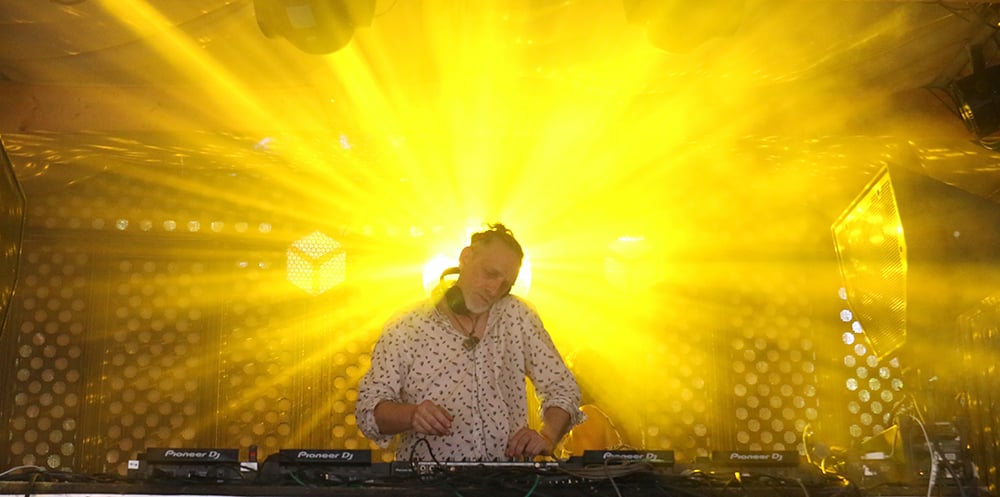 Darcy Joan Cole: Adrian Stretch playing at Secret Garden Party 2022
Darcy Joan Cole: Adrian Stretch playing at Secret Garden Party 2022
Passion, not power
Castlemorton Common was the crescendo of a movement that rose, bleary-eyed, in the hangover of the second summer of love. Free parties moved dance music increasingly away from clubs to the derelict warehouses, fields and farms of England. As 1989 drew to a close, the party-goers drawn to the togetherness and hedonistic freedom of club nights like Shoom in London and The Hacienda in Manchester became disillusioned with an increasingly commercialised environment and a rise in cases of alcohol-induced violence; phenomena that are reflected in music festivals today, where beer brands buy up entire stages and reports of violence and chaos still dog Sunday nights at Reading Festival.
“It's a complete echo of what happened in the late 80s and early 90s, with club culture being run by corporate companies and the alcohol industry,” says Adrian, “What happened with the free party scene was about independence. They weren't trying to necessarily fight the government. They were just trying to say, ‘We don't want to be herded into these places where alcohol-induced violence occurs.’ We wanted safer, more community-led environments where people could do things independently and come up with ideas independently and creatively.”
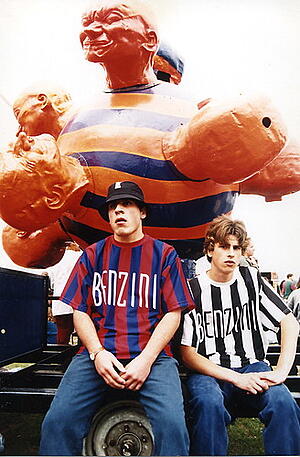 Adrian, who was “working at an independent record distributor selling records down the phone” during the late 80s and early 90s, became familiar with the rave scene through his work. “One of the labels that we dealt with was from Chicago. So, I was beginning to hear this kind of music and get excited about it. I listened to a pirate radio station in my local area called Green Apple and reached out to them saying I'd like to do a show and I'd bring some records for people and they took me on. They had only been going six months but they had a pretty good range had a pretty good transmitter. They covered the whole of the M25 round Surry, up to High Wycombe and into West London, so a really crucial area for the development of the rave scene.”
Adrian, who was “working at an independent record distributor selling records down the phone” during the late 80s and early 90s, became familiar with the rave scene through his work. “One of the labels that we dealt with was from Chicago. So, I was beginning to hear this kind of music and get excited about it. I listened to a pirate radio station in my local area called Green Apple and reached out to them saying I'd like to do a show and I'd bring some records for people and they took me on. They had only been going six months but they had a pretty good range had a pretty good transmitter. They covered the whole of the M25 round Surry, up to High Wycombe and into West London, so a really crucial area for the development of the rave scene.”
Through that, Adrian met a producer called Chad Jackson, who had a hit record with ‘Hear the Drummer (Get Wicked)’ at the time, and started to learn how to work in recording studios and produce. “At the same time, I was keeping in touch with what was going on within the rave scene. Going to work in West London around '92 was really important because A: it allowed me to get my record ‘Dub War’ out, and B: it allowed me to meet Spiral Tribe in the studio and help them make their first record. That's how I got much more involved really quickly.”
By meeting Spiral Tribe and helping “their promotion as a creative unit”, Adrian was invited to play keyboards over the DJs at their raves. Spiral were one of the key architects of the rave scene around the M25 and they were also one of the founding seven crews who created Castlemorton.
By breaking out of the clubs post-‘89, soundsystems like Spiral Tribe and Bedlam recreated the comradeship and rebellion of late 80s club culture on a much grander scale and with far fewer restrictions. This raw, unfettered and wild way of experiencing electronic music crystallised the escapism of raving. However, it also crystallised the sense of moral panic being splashed across the front pages which, unbeknownst to them at the time, would evolve into a draconian new law that would eventually kill off the scene altogether.
Alongside a large constituency of party-goers who were dissatisfied with the new corporate direction club culture was going in, technology was developing that would help sound systems launch clandestine parties at a moment’s notice. The popularisation of mobile phones, pagers and recorded answer machine messages meant that soundsystem crews could plan and set up raves in secret and then broadcast them at the very last minute.
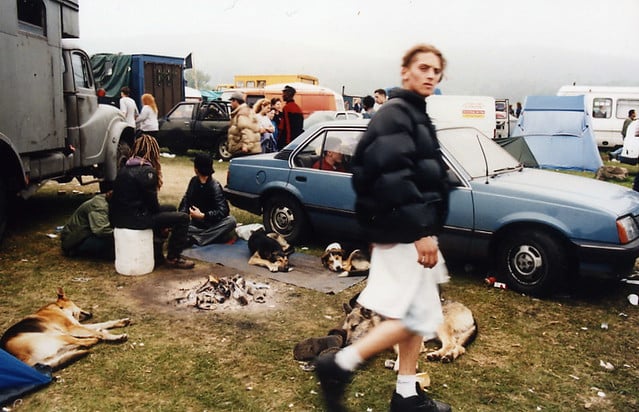
“You could keep it undercover for a long period of time until you were ready,” says Adrian, “I think that combination of elements being in place, and the dissatisfaction within the general cadre with alcohol-fueled clubs, really gave it some excitement.” This smash-and-grab strategy left the authorities impotent. Unless they could neuter a rave before it reached full flow, there was little they could do to stop it.
The sense of adventure, excitement and spontaneity that was imbued in the rave scene can be viewed as a backlash to the corporate excesses of the time. The second summer of love in 1989 arrived in the dying embers of Margaret Thatcher’s government. The economic excess synonymous with The City during the 80s was not being felt in the same way by the youth of the time. So, when an inexpensive, anti-establishment and counter-culture form of escapism based on shared experience became available, there was no shortage of willing participants.
“I think the idea that you didn't need a lot of money to do this, I think that's important,” says Adrian, “There was a feeling that the link between government and business had also entered the entertainment business world. There was a feeling that the youth was not being represented. There was a need for expression.”
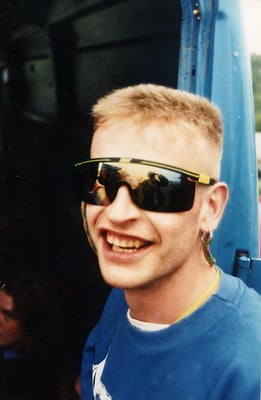 Going to raves in the late 80s was an experience of “organised chaos”, of “the physical power of electronic sound really affecting people,” according to Adrian, set up by “very determined crews who weren't off their heads. They were very, very together. You needed to be in order to pull something like that off.”
Going to raves in the late 80s was an experience of “organised chaos”, of “the physical power of electronic sound really affecting people,” according to Adrian, set up by “very determined crews who weren't off their heads. They were very, very together. You needed to be in order to pull something like that off.”
As opposed to the machinations of big business and Westminister, the rave scene was led by an enthusiastic community of ‘normal’ young people. Raves “made a huge difference to the way people thought about who could be in control… it was about people with passion, rather than people with power.”
Castlemorton Common Festival epitomised all of this; it showed free party culture in its purest and most audacious form. The 7-day festival distilled the sense of wildness, freedom, revolution, community and ambition that had defined the scene for the past 3 or 4 years. It is for the free party scene what the Mona Lisa is for Da Vinci, what Caesar is for Rome, what Transit is for vans. So, when Adrian heard the news that seven soundsystems had all arrived in Worcestershire for the mother of all parties, he hit the road.
A righteous revolution
In the weeks preceding Castlemorton Common, Spiral, Bristol’s Bedlam soundsystem and other crews from across the country had been holding events everywhere, collaborating with each other and formulating plans to centralise all of their resources in one place; namely Castlemorton Common in Worcestershire.
“The idea was that Castlemorton Common was a piece of common land, a big piece of common land, that there had been a travellers meet up at for a number of years,” says Adrian. New age travellers and rave soundsystem crews of the time often both connected music with a sense of spirituality and often both operated outside the law in the pursuit of their vision of free and independent expression. The now infamous Battle of the Beanfield, where police clashed violently with hundreds of New Age travellers who were trying to set up the 1985 Stonehenge Free Festival, was less than a decade prior, so both groups also shared a disdain for, what they saw as, an overzealous and tyrannical police force. This combination of similarities made them natural allies.
“I think it had been in the offering for a little while,” continues Adrian, “It was a good site for everyone to congregate because it was central. Systems from Nottingham, systems from Wales, systems from Bristol, Spiral, they could all head to that area. They were all probably within a 50 to 100-mile radius prior, so they were ready for it. The first we knew about it ourselves in London was on the Thursday, when we got word that systems were heading towards the same spot. We didn't know how many at the time. It wasn't really until Friday morning that we started to find out that there were seven there and just to get there as fast as we could. Obviously, you don't know how much the police knew or how well organised they might be in shutting something down. Actually, they didn't have a clue. They were totally unprepared for it.”
“It was wild, man,” says Adrian, “I think by day three things got slightly sketchy in places. The police didn't really come in until most people had gone home, which was like a week later. So all you really saw was the helicopters above you. You never saw anything else. It did feel quite anarchic. Then again, there was very little trouble if you consider the fact that 35,000 people were there to party their heads off. It was a proper party. There was also a man-made lake in an old mine, so there was somewhere for people to go and just chill out and have a swim and get away from it for a bit, which helped its longevity, I can tell you. You could climb up this hill above the lake and look down, which gave you a real perspective of what you're actually seeing…what was really fascinating was right in the centre of all of this, there were a series of old school waggons in a circle. It was like the party was circling around the original [travellers] meeting point.”
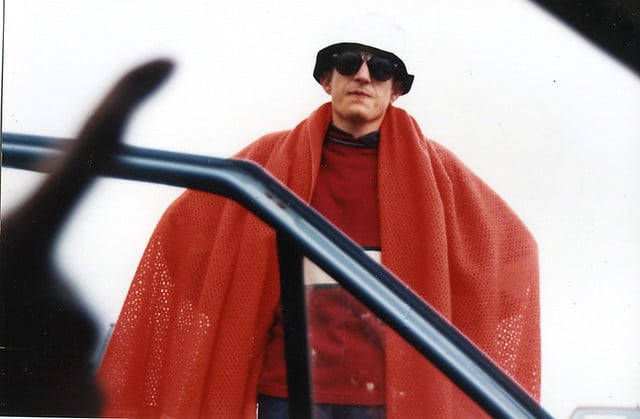
What was happening below, as Adrian looked down from the hill, was equal parts revolution and rave. The power of people and music unleashed with white-hot speed and fury; 35,000 people assembled in the blink of an eye in order to feel like part of something bigger - something that they controlled. DiY soundsystem founder Harry Harrison, in his book ‘Dreaming in Yellow: The story of DiY Soundsystem’, says that Castlemorton Common Festival “looked, smelled and sounded like revolution; a righteous revolution against the entrenched and heartless establishment which had been quietly and ruthlessly running England for centuries. We had intended to shock, we had intended to challenge and now the sheer scale of this revolution had become clear; magnificent yet terrifying, ranged endlessly below us, looking as if for once we were winning.”
The audacity of Castlemorton was simultaneously what made it so special and what spelt the rave scene’s downfall. “I did really think to myself, ‘We'll be lucky if we see this happen again like this,’” says Adrian, “It was too anti-establishment not to be jumped on.”
Although Castlemorton is, wittingly or unwittingly, one of the founding inspirations for most electronic music festivals in the UK and abroad today, it proved too raw for the time. It showed what a shared, rebellious experience through electronic music could look like. From the inside, that experience was an oasis of independence, creativity and escapism, but from the outside, it was a squalid detachment from civil society and struck complete terror in the minds of politicians and parents watching on in horror. The backlash was fierce. It spawned the infamous 1994 Criminal Justice and Public Order Act which criminalised events where “‘music’ includes sounds wholly or predominantly characterised by the emission of a succession of repetitive beats.” That change in the law effectively ended the rave era in the UK, but it also marked the beginning of a global expansion.
Moral panic in the streets
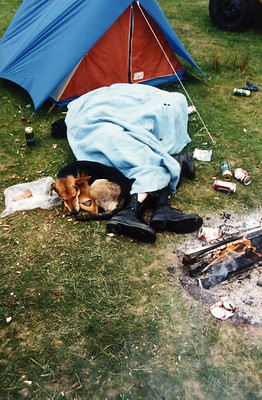 When the crowds had cleared and the dust had settled, the backlash to Castlemorton and the rave scene generally began. The festival showed the power that these soundsystems had; they could amass the population of a small British town with lightning speed and keep them there for, what the government saw as, a week of degenerative immorality and rural vandalism. “One of the problems [with Castlemorton] was a total lack of infrastructure”, says Adrian, “Which, obviously, was the thing that was really highlighted [by the press and authorities] as being one of the major issues with it.” As the Castlemorton Common rave had to, by legal necessity, set up so quickly, there was no time or requirement to set up the things we take for granted at contemporary music festivals - working toilets, sanitary facilities, first-aid or running water.
When the crowds had cleared and the dust had settled, the backlash to Castlemorton and the rave scene generally began. The festival showed the power that these soundsystems had; they could amass the population of a small British town with lightning speed and keep them there for, what the government saw as, a week of degenerative immorality and rural vandalism. “One of the problems [with Castlemorton] was a total lack of infrastructure”, says Adrian, “Which, obviously, was the thing that was really highlighted [by the press and authorities] as being one of the major issues with it.” As the Castlemorton Common rave had to, by legal necessity, set up so quickly, there was no time or requirement to set up the things we take for granted at contemporary music festivals - working toilets, sanitary facilities, first-aid or running water.
Castlemorton Common Festival also provided an opportunity for the incumbent Tory government led by John Major, who had won a general election just a month before in April, to cement their authority and illustrate their moral superiority to the conservative voters who had just elected them. Seeing the anarchy of the festival horrified much of the population who saw the rave scene as deviant, so stamping it out was politically expedient and consistent with public opinion.
“It gave them something to jump on,” says Adrian, “they were saying, ‘We have to be the moral party. All of these people would vote Labour, so they're immoral. We're the ones who care about basic family values. Look what's happened to our society. We're the only ones that can fix it.’ That was just gutting. They were using this to say, ‘This is what's wrong with British society.’ What actually should have happened was for them to say, ‘Okay, look, we need to provide safe spaces for this to happen, because this is what people want.”
Portraying people enthralled by electronic music and rave culture as deviants, degenerates and immoral was nothing new; it had been going on since the scene began. In 1988 and ‘89, the British press characterised attendants at acid house raves as “drug crazy”, “evil”, “zombies” and part of a dangerous “cult”. Sir Ralph Halpern, the founder of Top Shop, went so far as to ban smiley t-shirts from his stores and the BBC removed D-Mob’s “Acieeed! Acieeed! Acieeed!” from its playlists. Just as Castlemorton Common was the crescendo of the rave scene, it was also the crescendo of the moral panic that came with it. “There was a feeling after the Castlemorton Common rave that was like, ‘Oh, my God, it's gone too wrong now. It's gotten too out of control,’” says Adrian.
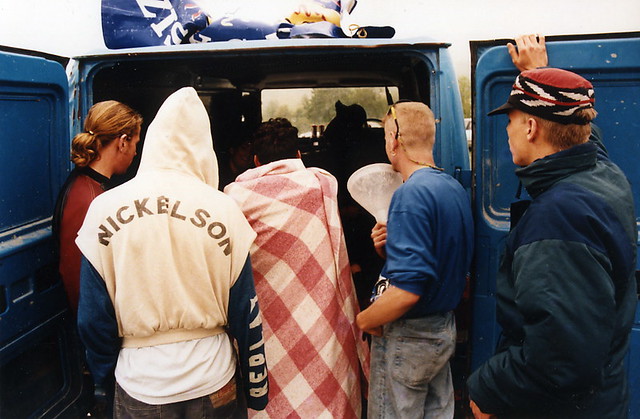
The 1994 Criminal Justice and Public Order Act was a direct result of Castlemorton Common and included a set of draconian new rules that curtailed the ability of the movement to flourish. As well as banning “repetitive beats”, it also gave the police greater rights to take and retain intimate body samples, increased police power to perform unsupervised “stop and search”, criminalised previously civil offences that affected many forms of protest and “repealed the duty imposed on councils by the Caravan Sites Act 1968 to provide sites for gypsy and traveller use.”
“The police had much larger budgets to try and break up convoys and to prosecute people who gave their land for raves,” says Adrian on the on-the-ground impact of the legislation. “‘Repetitive beats’ was the key thing. It took a while for people to think about how to adjust in the longer term. There was also a lot of conjecture about whether the alcohol industry was behind this because no one was selling any booze [at raves] and they wanted people back in bars and back in clubs. So they needed to work out how to tempt those people back into those environments.”
 The crackdown on rave culture was inevitable after Castlemorton Common Festival. It was too big, too chaotic and too scary for the government to ignore. “When you pull seven soundsystems together at the same time, you create something that is too big to go unnoticed, which is what the Castlemorton Common rave did. It pushed itself above the surface while it was still very chaotic and not very well refined.”
The crackdown on rave culture was inevitable after Castlemorton Common Festival. It was too big, too chaotic and too scary for the government to ignore. “When you pull seven soundsystems together at the same time, you create something that is too big to go unnoticed, which is what the Castlemorton Common rave did. It pushed itself above the surface while it was still very chaotic and not very well refined.”
“I think people were very inspired by it,” continues Adrian, “but also, very quickly, had to fight against new laws… It's weird, because, had it not been for that legislation [the Criminal Justice and Public Order Act], I don't know whether people like Spiral Tribe would have left the country and spread the word elsewhere. Yes, it was gutting to see that kind of restriction put in place and you could say that it killed the scene in the UK, but it actually created a larger, more worldwide scene.
“Some people went off and built careers in other countries like Ibiza, for example. Spiral took their sound system through Europe and into Australia. So I think, on a longer-term basis, it continued to inspire worldwide…The Ibiza scene exploded [after Castlemorton]. Things abroad exploded because there weren't the same kind of restrictions in place. Ayia Napa and those kinds of places. It became a holiday thing that you'd go abroad to do.”
Although the Criminal Justice and Public Order Act dampened the rave scene in the UK, post-'94 a slew of protest raves took place that sought to rebel against the new law. Sunnyside Sound System, based in Bristol, was at the vanguard of the movement to rebel against the draconian legislation put in place by John Major's government. Photographer Matt Smith was a part of Sunnyside and documented the rave and acid house movement across the late 80s and 90s, which has now been turned into his books Exist to Resist and Full On Non Stop All Over.
Check out the campaign video for his Exist To Resist book.
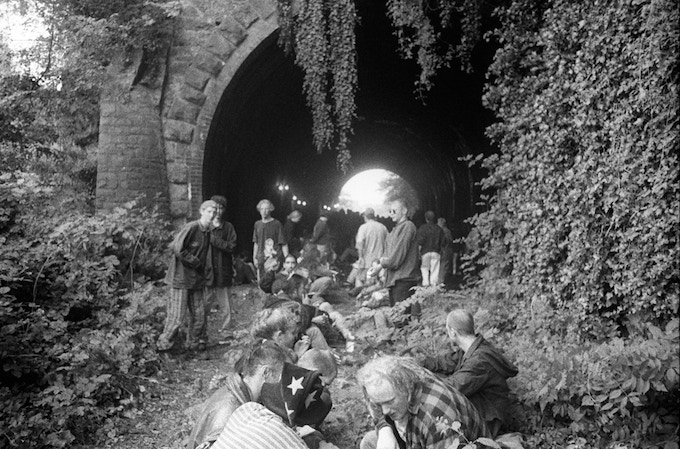 Matt Smith: Free Party Under Clifton Suspension Bridge Bristol '95
Matt Smith: Free Party Under Clifton Suspension Bridge Bristol '95
Full circle
As well as helping to energise the party scene in the Balearics and Ayia Napa, the reverberating influence of Castlemorton Common was evident in the electronic music festivals that began in the decades that followed. In the late ‘90s early 2000s, electronic music festivals began to find their roots in the UK, with festivals like Creamfields, Glade and Bang Face, and on the continent with EXIT, O.Z.O.R.A. and Tomorrowland. By the time events like Boomtown arrived in the late 2000s, almost every festival in the world has an electronic music stage; offering a refined, socially acceptable and, crucially, commercialised version of Castlemorton Common. “The people who had been inspired by Castlemorton had gone out and studied business,” says Adrian, “worked out how to present their ideas to councils and say, ‘We can make a safe environment.’ They kind of worked out the game and then you see the beginning of that sort of electronic festival scene in the sort of the 2000s start to start to really grow.”
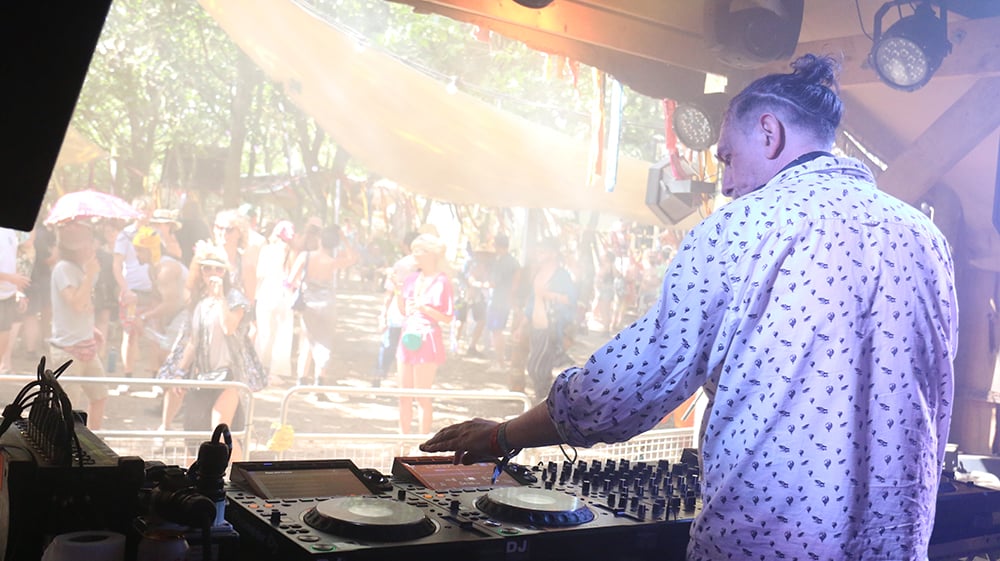
Darcy Joan Cole: Adrian Stretch @ SGP
By working with big brands, businesses, councils, and local authorities, electronic music festivals inspired by the white heat of Castlemorton Common Festival became more palatable. Removing the anarchic radicalism and guerilla tactics helped to nullify the moral panic that had become synonymous with acid house and rave and gloss festivals with a respectable sheen. With industry value projected to reach £2.79 billion in 2023, UK music festivals have become a huge part of the entertainment industry; micro-economies within themselves.
But does this commercialisation damage or enhance the experience of festival-goers in the 2020s? There are toilets, gourmet food stalls, infrastructure, air-tight logistics planning and bars selling extortionate frozen daiquiris, but has the sense of revolution and protest been lost?
After a spate of acquisitions in the mid-late 2010s, Live Nation now owns, at least, 25% of all 5k-plus capacity festivals in the UK and operates in 40 countries worldwide. In just three months this summer, the festival behemoth sold nearly 6 million tickets to festivals in the UK. Live Nation is owned by Liberty Media Corporation, whose CEO used to be the Director of Barnes & Noble (The American version of WH Smith’s) and Starbucks amongst other corporations; hardly a figure of the counter-culture.
Although, for pundits, many of the same urges remain for attending festivals - a sense of connection, escapism and the love of music. However, the experience has been sanitised and commercialised by the organisations that run them; just as clubs were during the late 80s.
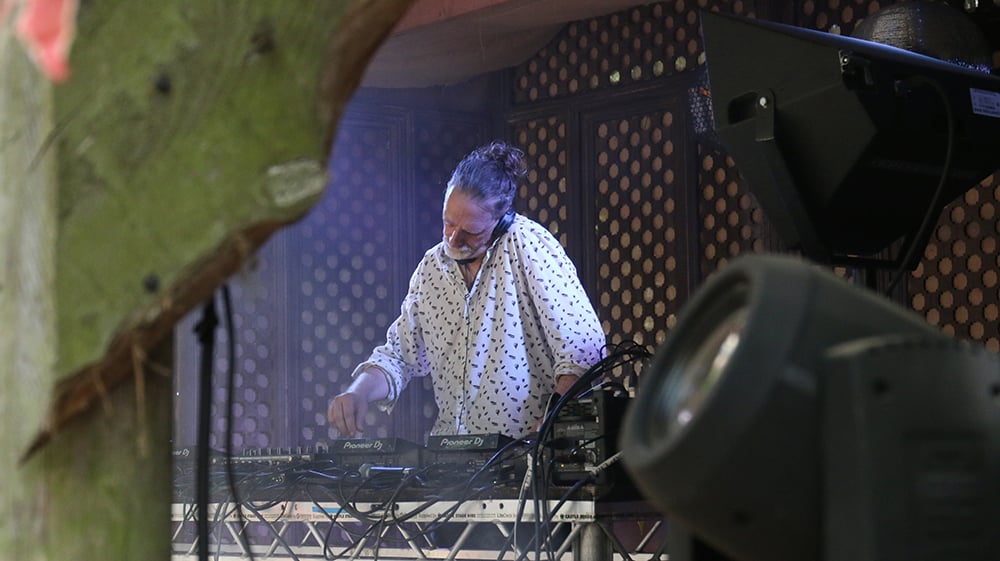
Darcy Joan Cole: Adrian Stretch @ SGP
Does this mean that we’ve come full circle? Has the commercialisation of the music festival experience gone too far the other way? Even if there is an appetite for a renewed sense of revolution attached to music festivals, the internet and thriving club culture in most major UK cities provides a safety valve for that pressure to escape in a way that it couldn't, to the same extent, in the 80s and early 90s.
Just like in the late 80s, big business has sunk its teeth into an experience that was designed to be an anti-establishment exercise. If there is going to be something radical and revolutionary to take over, the answers, yet again, will be in the hands of the common people.
Special thanks to Matt Szabo, David Bradbury, Matt Smith & Darcy Joan Cole for providing images.
FIND OUT MORE:
A vision for the future - How dBs grad Ché Leader is helping improve accessibility in dance music
Want to get booked for your first DJ set? Formula shares 6 top tips..
These are the breaks - 7 of the most influential drum breaks in electronic music



